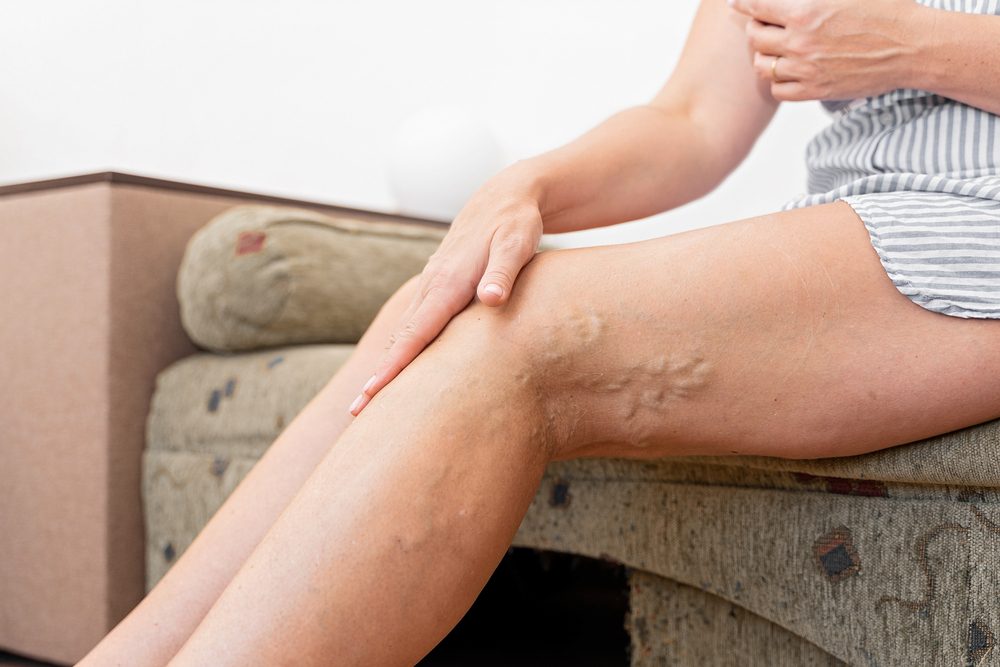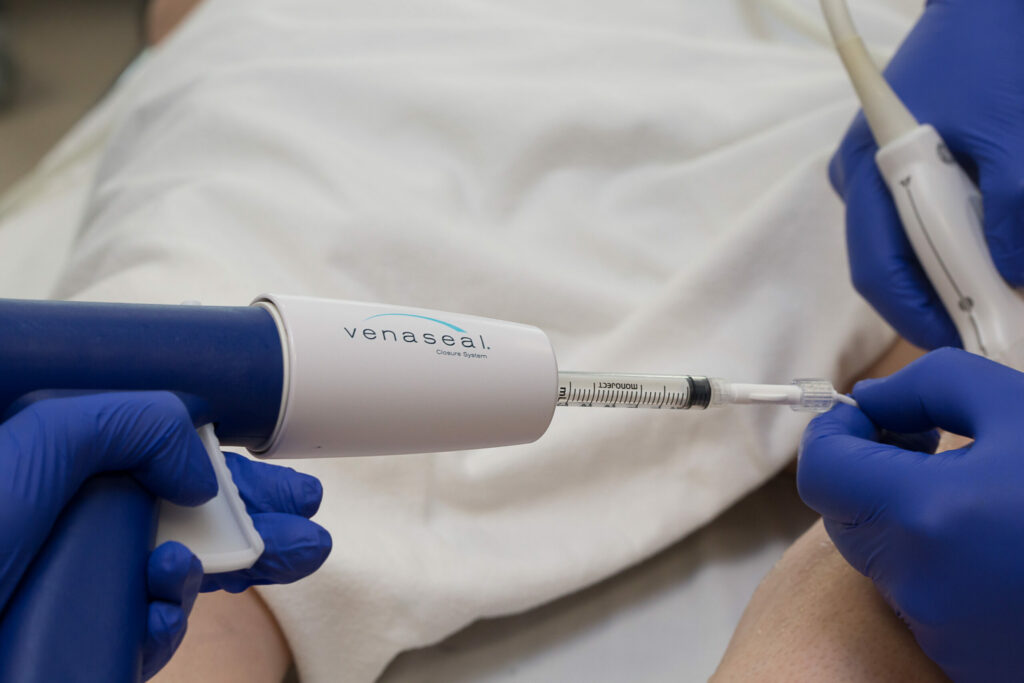Sclerotherapy by itself to treat varicose veins is an option if the veins are not being fed by leaking main surface veins. Sclerotherapy is also a good choice for spider veins. When talking sclerotherapy or Venaseal®, our vascular surgeon will let you know what is the best option for your varicose veins and spider veins. Often, our surgeon uses both Venaseal® and sclerotherapy in the same session.
Sclerotherapy?
Sclerotherapy – injecting an irritant fluid known as sclerosant into varicose veins. This sclerosant disturbs the lining of the varicose vein or spider vein, allowing the walls to stick together when wearing a compression stocking or sock . Once the varicose veins stick together, they will fade over time (approx 3-6 months).
What is Venaseal®?
Venaseal® – a medical-grade adhesive or ‘glue’ used to shut down the leaking main surface veins that feed the varicose veins. Often, you can’t see these main surface veins. Varicose veins are the branches of this main vein and these are what can be seen, often bulging and ropey looking.

A drop of ‘glue’ is dispensed at intervals along the leaking main surface vein via a thin tube. The surgeon then puts pressure over the vein to make sure it closes and seals. The varicose veins will be absorbed by the body over time.
Recovery time for sclerotherapy or Venaseal® treatment is much the same with little down time for either. And any side effects are mostly much the same, too. Some bruising, minor swelling, redness and slightly sore areas are common.

Sclerotherapy can improve the look of varicose and spider veins and reduce painful symptoms, like aching, throbbing and cramping. Other options like wearing compression stockings and making lifestyle changes (doing regular exercise and maintaining a healthy weight) are also key.
Sclerotherapy or Venaseal® for your varicose veins? Talk to us to find out more.


